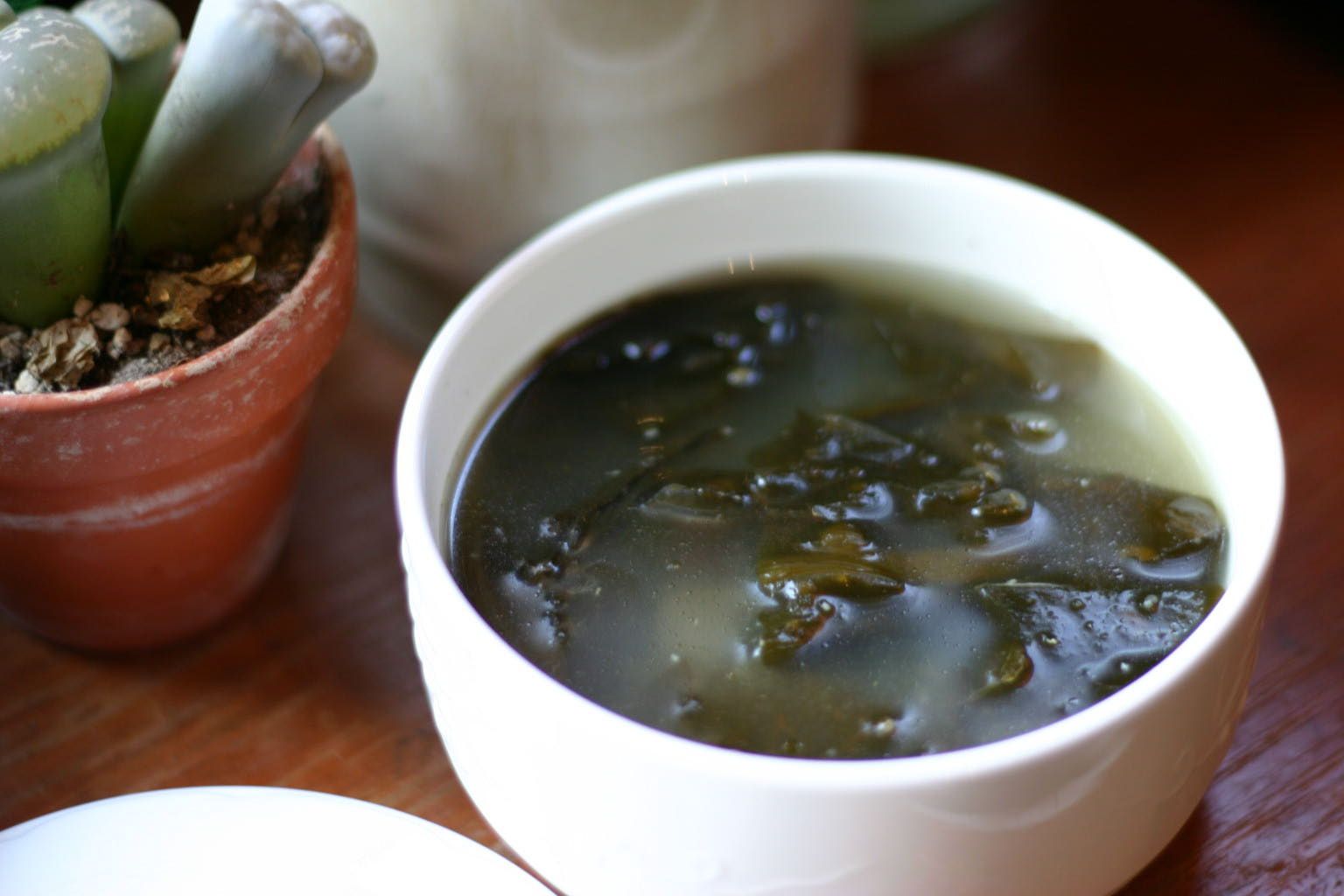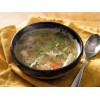Do you like seaweed soup?
Seaweed or macroalgae refers to several species of macroscopic, multicellular, marine algae. The term includes some types of red, brown, and green macroalgae. Marine algae species such as kelps provide essential nursery habitat for fisheries and other marine species and thus protect food sources; ocean algae species from seaweeds to planktons play a vital role in carbon capture, producing up to 90 percent of the planet's oxygen.
Korean seaweed soup (miyeok guk or miyuk guk) is a soup predominantly made with sea mustard also known as brown seaweed (undaria pinnatifida) or Japanese wakame.
The soup is also typically accompanied with some form of protein (e.g. beef, seafood – mussels or prawns, or tinned tuna) along with light seasoning (salt, soy sauce, garlic and toasted sesame oil).
Korean seaweed soup is also known as birthday soup, as many Koreans eat this soup on their birthday. (However, people eat this on normal days just as often as well.)
So, why do people have it on a birthday?
In Korea, seaweed soup is often served for a woman who just delivered a baby, because the nutrients that are contained in the seaweed are known to help with the recovery and also producing breast milk.
Anyway, because of this soup’s association with childbirth, the soup is known as birthday soup.
1. Korea seaweed soup
Ingredients
15 g dried seaweed (Korean miyeok or Japanese wakame), (0.5 ounces)
120 g beef chuck or round steak, (4.2 ounces), sliced into smaller pieces
1/4 tsp fine sea salt (or more to taste)
A few cracks black peppers
1 Tbsp sesame oil
1 1/2 Tbsp soy sauce, I used regular Kikkoman soy sauce
1 tsp minced garlic
5 cups of water
Instructions
Soak the dried seaweed in cold water for 5 to 10 minutes while allowing it to expand. Drain the water away and rinse the seaweed a couple of times in running water. Drain/squeeze the water out. (If you’re using non-pre-cut dried seaweed, cut it with scissors – about little finger lengths). Set it aside.
Combine the sliced beef with the salt and black pepper in a small bowl. Mix them well and set aside until needed.
Preheat a medium pot over medium heat (about 20 seconds). Add the sesame oil, seaweed and beef. Stir them well until the beef is partly cooked (about 2 mins). Add the soy sauce, garlic and water. Cover the pot and boil over medium - medium-high heat until the meat is fully cooked (10 to 15 mins). Adjust the taste with more salt if needed.
Serve warm with a bowl of steamed rice and other Korean side dishes.
2. Japanese seaweed soup
Seaweed soup is a traditional frugal and nutritious soup in Japanese cuisine. From basic ingredients, Japanese seaweed soup serves with fresh tofu and a mildly sweet taste of miso broth while still providing enough nutrition for each diet.
Especially, seaweed is a very healthy ingredient because it contains a lot of minerals for your body. In addition, seaweed also contains more vitamins than any other fruits or vegetables.
Ingredients
1 teaspoon dried seaweed (Wakame type)
15 g dried seaweed
830 ml cold water
160 g firm tofu
14 g dried fish (Bonita)
1 teaspoon white miso paste (fermented soybean paste)
2 teaspoons red miso paste
1 scallion
Instructions
1). First, cut the firm tofu into small cubed dices (1.5 cm side). Then soak the dried seaweed sheet in the cold water, and separate the green scallion into the bulb and leaves parts. Cut the bulb into small slices lengthwise.
2). Next, make the Dashi sauce. Put about 830 ml water into a large pot with dried fish - Bonita and heat in 3-4 minutes until the fish drop to the bottom of the pot.
3). Miso sauces are mixed well
Now, filter the Dashi sauce, remove the boiling fish, and keep the sauce left. Then mix two kinds of Miso sauce: the white and red ones with a little filtered Dashi sauce until Miso sauces are mixed well. We pour this mixture of sauce into the pot and boil it.
4). When the pot is boiling, add dried seaweed, chopped green onion, and tofu to the pot, cook for 5 minutes. Finally, put the soup into a bowl, add more green onion if like. Serve with rice and best when warm. Enjoy!
Related Articles
Search
Categories
Popular Posts





















Comments: 0
No comments